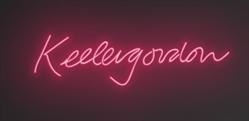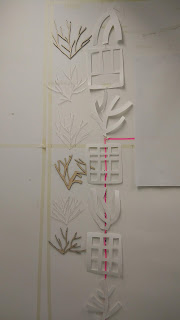Keelergordon Studio Visit
During the London trip in December I was fortunate enough to Visit Keelergordon Studios. This was a really eye-opening visit for me, as it introduced me to an aspect of the textiles industry which I hadn't previously been aware of. Working in digital print and screen-printing, the team create a huge range of textiles designs for womenswear, childrenswear and swimwear, among other areas and sell them to companies like H&M, keen to emulate the designs seen on the catwalk and trend forecasting websites for the high-street. Every collection has an emphasis on eclectic and colourful repeat patterns, often featuring Aztec or oriental inspired motifs. It was fascinating listening to the team explain the process behind each design, and refreshing to hear them speak honestly about the demands of the job. Clearly, being part of such a fast paced, commercial industry can be stressful and take its toll on the designers. One of whom admitted that he felt creatively stifled by the need to create such a vast quantity of work in a small amount of time, neglecting his desire to work in a more individual way. However, he went on to say that while it had taken time to adjust, he had eventually found his niche within the team and was producing work which he was pleased with.
 |
| An example of a Keelergordon print. You can see the emphasis on colour and detailed, repeat patterns. |
One thing that struck me was the relaxed nature of the studio, despite the fast turnaround in production. It felt like a comfortable and motivational environment to work in, with samples and images on all surfaces constantly triggering new ideas. An important aspect of our visit was the repeated emphasis on drawing, hard work and acceptance of technology. Much of the design work is done using software like Photoshop which is unavoidable in the industry now, so a good grounding in these type of programmes is essential. However, every design originates from hand drawn ideas, so I think one of the main messages I took away from the visit was to embrace old and new technology at the same time. Becoming proficient at using Photoshop doesn't have to be at the detriment of basic drawing and mark-making skills, which are arguably the most important part of the whole process, as this is where the ideas originate.
It's obvious that this is an extremely competitive job within the creative industry, where designers are often paid per design they sell, so being focused and ahead of the curve is imperative. That said, from Keelergordon I got the sense that there is plenty of space for personal creative development in the job. The visit was a fantastic insight into the variety of textiles jobs out there.



Comments
Post a Comment